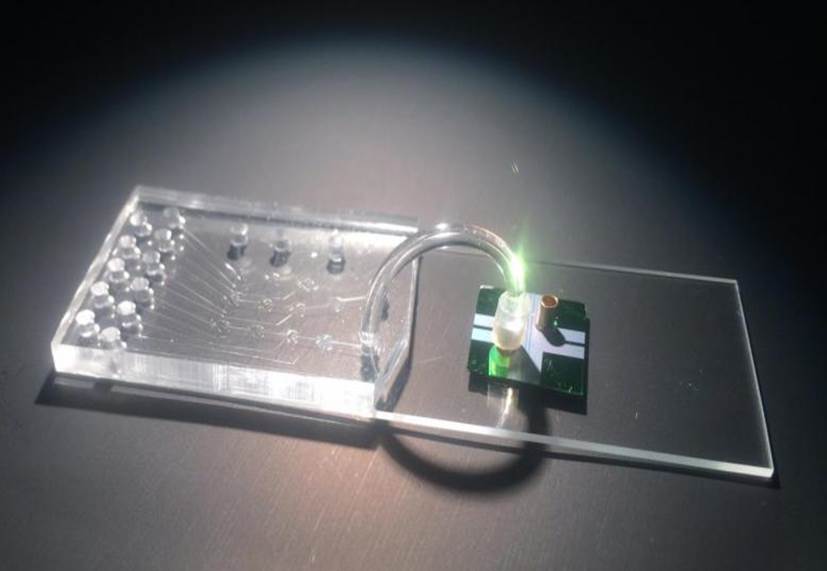Ebola epidemic
A Scientist Whose Music Gives Comfort
Posted on by Dr. Francis Collins
Over the past few years, my blog has highlighted a wide range of Creative Minds from across biomedical research. But creative minds come in many forms, and, for a change of pace, I’d like to kick back this August and highlight some talented scientists who are also doing amazing things in the arts, from abstract painting to salsa dancing to rock’n’roll.
My first post introduces you to Dr. Pardis Sabeti, a computational geneticist at the Broad Institute of Massachusetts Institute of Technology (MIT) and Harvard, Cambridge, and one of Time Magazine’s 2014 People of the Year for her work to contain the last major Ebola outbreak in West Africa. When she’s not in the lab studying viruses, Sabeti is the hard-driving voice of the indie rock band Thousand Days that has been rocking Boston for more than a decade.
Ebola Virus: Lessons from a Unique Survivor
Posted on by Dr. Francis Collins

Caption: Ebola virus (green) is shown on cell surface.
Credit: National Institutes of Allergy and Infectious Diseases, NIH
There are new reports of an outbreak of Ebola virus disease in the Democratic Republic of Congo. This news comes just two years after international control efforts eventually contained an Ebola outbreak in West Africa, though before control was achieved, more than 11,000 people died—the largest known Ebola outbreak in human history [1]. While considerable progress continues to be made in understanding the infection and preparing for new outbreaks, many questions remain about why some people die from Ebola and others survive.
Now, some answers are beginning to emerge thanks to a new detailed analysis of the immune responses of a unique Ebola survivor, a 34-year-old American health-care worker who was critically ill and cared for at the NIH Special Clinical Studies Unit in 2015 [2]. The NIH-led team used the patient’s blood samples, which were drawn every day, to measure the number of viral particles and monitor how his immune system reacted over the course of his Ebola infection, from early symptoms through multiple organ failures and, ultimately, his recovery.
The researchers identified unexpectedly large shifts in immune responses that preceded observable improvements in the patient’s symptoms. The researchers say that, through further study and close monitoring of such shifts, health care workers may be able to develop more effective ways to care for Ebola patients.
Shining Light on Ebola Virus for Faster Diagnosis
Posted on by Dr. Francis Collins

Caption: A rapid Ebola detection system consisting of a microfluidic chip (left) and an optofluidic chip (right), connected by a curved tube (center).
Credit: Joshua Parks, University of California, Santa Cruz
Many lessons were learned during last year’s devastating outbreak of Ebola virus disease in West Africa. A big one is that field clinics operating in remote settings desperately need a simple, rapid, and accurate test that can tell doctors on the spot—with just a drop of blood—whether or not a person has an active Ebola infection.
A number of point-of-care tests are under development, and it’s exciting to see them moving in the right direction to fill this critical need [1]. As a recent example, a paper published in Nature Scientific Reports by a team of NIH-supported researchers and colleagues shows early success in rapid Ebola detection with an automated lab on a chip [2]. The hybrid system, which combines microfluidics for sample preparation with optofluidics for viral detection, identifies Ebola at concentrations that are typically seen in the bloodstream of an infected person. It also distinguishes between Ebola and the related Marburg and Sudan viruses, suggesting it could be used to detect other infectious diseases.
